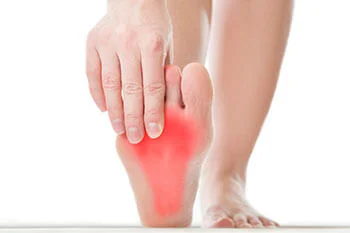Table of Contents
Introduction
Blisters on the feet are often a result of the shoes rubbing against the skin. Additionally, friction blisters may also be a result of wearing socks that do not fit correctly. For example, sock blisters can form when harsh materials in the sock interact with the foot. Specifically, wool is a material that may cause blisters to develop. Despite the fact that socks can sometimes cause foot blisters, the right pair of socks can also prevent them from forming. Since sweat on the feet can make the feet more susceptible to developing blisters, it is suggested that moisture-wicking socks are worn that will help keep the feet drier. When it comes to selecting a good pair of socks, it is beneficial to inquire about the quality of the sock. If you are currently living with blisters on your feet, and are looking for effective prevention methods, it is suggested that you contact a podiatrist today for information and treatment.
Blisters are prone to making everyday activities extremely uncomfortable. If your feet are hurting, contact one of our podiatrists of Integrative Foot & Ankle Centers of Washington. Our doctors can provide the care you need to keep you pain-free and on your feet.


